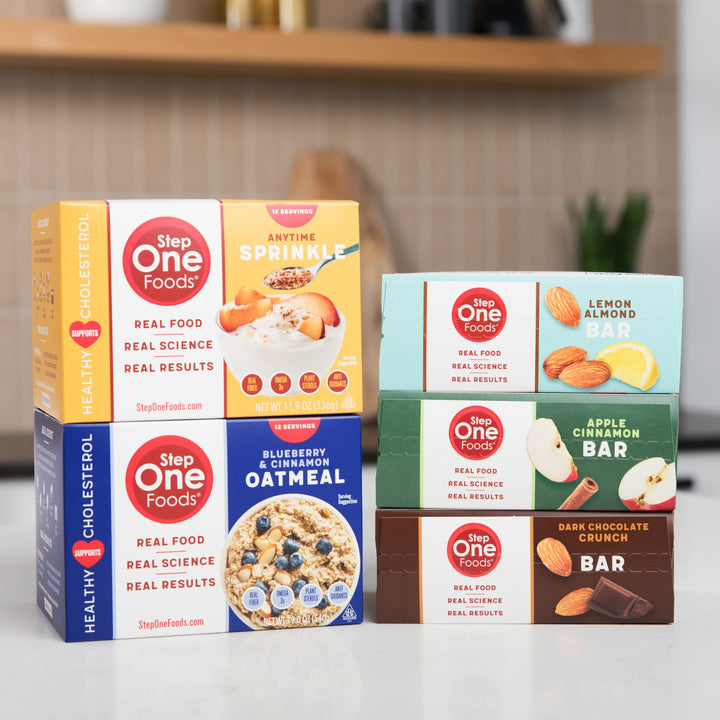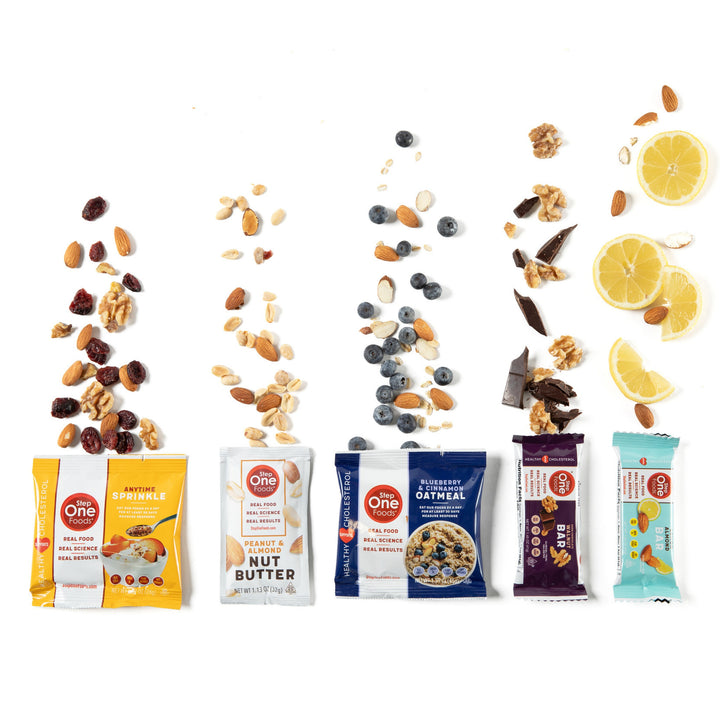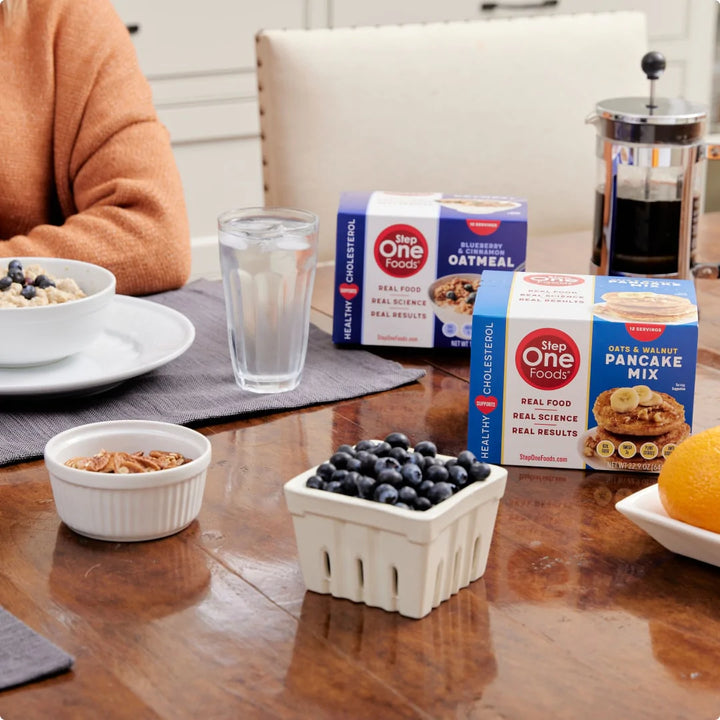
The Science Behind Step One Foods
Your health is very important to you. It is paramount to us. That’s why we created our foods using formulations grounded in science and backed by extensive published research.
View the 550+ peer reviewed references supporting the composition of our products here
Most Products Promise. Ours are Proven.
Most “heart-healthy” products are regular foods with nutrients sprinkled in. Step One is different: each serving is formulated from whole ingredients, with effects proven in clinical research.
Explore summaries of the peer-reviewed research that supports Step One Foods.
Step One Foods Validated at Mayo Clinic
Background: Many hyperlipidemic patients prescribed statins are unable or unwilling to take them. A snack-based alternative containing cholesterol-lowering bioactives could represent a therapeutic option.
Objectives: Evaluate the effect of Step One Foods on fasting LDL cholesterol in statin-intolerant patients.
Methods: Randomized, double-blind, free-living crossover study with adult participants consuming Step One Foods foods vs. calorie-matched control snacks.
Results: Participants consuming Step One Foods twice daily lowered LDL cholesterol significantly within 30 days compared with control snacks.
Conclusions: Hedonically acceptable snack foods containing a compendium of cholesterol-lowering compounds can rapidly and meaningfully reduce LDL cholesterol.
Fiber & Cholesterol
Plant Sterols / Stanols
Omega-3 Fatty Acids
Antioxidants & Polyphenols
Whole Diet Patterns
When statins are not enough our products are here to help.
The American College of Cardiology advises optimizing nutrition, specifically increasing fiber and plant sterol intake, prior to prescribing various therapies for LDL cholesterol lowering.
Step One Foods is made from a suite of concentrated whole food ingredients designed to deliver therapeutically impactful levels of fiber, plant sterols, antioxidants, and omega-3 fatty acids. We help lower your cholesterol without the potential for side effects.
Unlike other companies, we take your health seriously.
- Our products were developed by a cardiologist.
- They have been tested and evaluated by cardiologists and patients.
- They are designed with precision, so you know exactly what nutrients are being delivered and in what quantities.
- There are no additives, artificial preservatives, colors, or artificial flavors.
We stand behind our products: If our solution does not work for you, we offer a money-back guarantee*

As easy as taking a pill.
All you need to do is eat 2 servings of Step One Foods per day instead of something you are eating already.
That's it. No other lifestyle changes required.
And in 30 days you can see a cholesterol response.
Trying Step One Foods for at least 30 days is the easiest, most direct way to test whether you have the potential to impact your cholesterol levels through dietary adjustment.

A range of cardiovascular benefits
The fact that people saw dramatic cholesterol responses in the clinical trial is objective proof that Step One Foods are simply good for you.
Hundreds of other published studies have shown that if you're eating right for lowering cholesterol, you're also eating right to:
- Lower blood pressure
- Improve blood sugar control
- Reduced inflammation
- Lose weight
These effects will take longer than 30 days to achieve but are absolutely possible with Step One Foods. In addition, many customers report improved digestive function, fewer cravings, and better energy levels… almost immediately.
